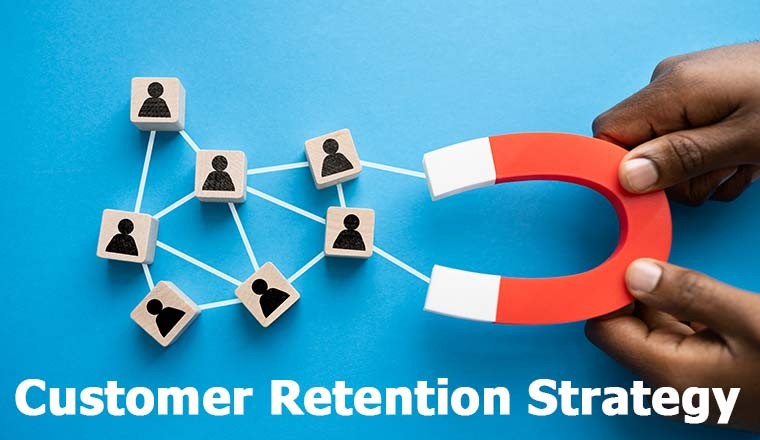In the dynamic landscape of modern commerce, where competition intensifies with every innovation, the pursuit of new customers often overshadows an equally, if not more, critical objective: retaining the ones you already have. While attracting fresh clientele is undoubtedly vital for growth, the true bedrock of sustainable business success lies in cultivating lasting relationships with existing customers. Customer retention is not merely about preventing churn; it’s about fostering loyalty, transforming casual buyers into ardent advocates, and leveraging the immense value embedded in repeat business. For any enterprise seeking enduring prosperity, understanding and meticulously implementing effective retention strategies is no longer optional—it is a strategic imperative.
At its core, successful customer retention begins with an unwavering commitment to **delivering exceptional customer experience (CX)**. This isn’t just about problem resolution; it encompasses every touchpoint a customer has with your brand, from initial discovery to post-purchase support. A seamless, intuitive, and enjoyable experience builds trust and convenience, making customers want to return. Consider a software-as-a-service (SaaS) company that prioritizes user-friendly interfaces, proactive onboarding, and swift, knowledgeable technical support. By investing in these areas, they reduce frustration points and ensure customers derive maximum value from their product, fostering stickiness. Conversely, a clunky website, slow response times, or unhelpful service agents can quickly erode goodwill, driving customers into the arms of competitors, regardless of how good the product itself might be. Consistency in delivering a positive experience across all channels—digital, phone, and in-person—reinforces reliability and makes a brand truly dependable.
Beyond the initial experience, **personalized communication and tailored offers** play a pivotal role in making customers feel valued and understood. In an age of data abundance, businesses have an unprecedented opportunity to move beyond generic marketing. By leveraging customer data ethically and intelligently, companies can send targeted messages, recommend relevant products based on past purchases or Browse history, and celebrate milestones like anniversaries or birthdays with special discounts. Think of how e-commerce giants use purchase history to suggest complementary items or alert customers to sales on their favorite brands. This isn’t just about selling more; it’s about demonstrating that you know your customer and care about their individual needs and preferences. When communication feels genuinely relevant, it strengthens the bond, whereas irrelevant or excessive messaging can quickly lead to disengagement and unsubscribes.
Another powerful retention strategy lies in fostering a sense of **community and belonging**. Customers often seek more than just transactions; they desire connection and a shared identity with brands that align with their values. Creating forums, social media groups, or even hosting events where customers can interact with each other and with the brand can significantly enhance loyalty. For example, an outdoor gear company might host local hiking meetups or create an online community where adventurers share tips and photos. This transforms the brand from a mere provider of goods into a facilitator of shared passions. Such communities build emotional attachment, provide valuable peer support, and offer an authentic feedback loop for the business, further solidifying the customer’s commitment.
Furthermore, implementing a well-structured **loyalty program** can provide tangible incentives for repeat business. While often mistaken for mere discount schemes, effective loyalty programs go deeper. They reward customers for their continued patronage, offering exclusive access, tiered benefits, points systems that convert to rewards, or special recognition. A coffee shop’s “buy X, get Y free” card is a simple example, but more sophisticated programs might offer early access to new products, personalized concierge services, or even philanthropic contributions on behalf of the customer. The key is to make the rewards desirable and the program easy to understand and participate in. The perceived value of these rewards must outweigh the effort required to earn them, genuinely encouraging customers to choose your brand over alternatives.
Actively soliciting and intelligently acting upon **customer feedback** is also an indispensable retention tool. Customers appreciate feeling heard and seeing their suggestions translate into improvements. Implementing mechanisms for feedback, such as surveys, direct feedback forms, or even dedicated customer advisory boards, demonstrates a commitment to continuous improvement. More importantly, it’s about closing the loop: acknowledging the feedback, explaining what actions are being taken, and communicating the positive changes that result. A restaurant that notices repeated feedback about long wait times and then visibly implements a new reservation system or streamlines kitchen operations, and subsequently communicates these changes, earns immense goodwill. This proactive approach not only addresses pain points but also reinforces the idea that the customer’s voice truly matters.
Finally, a strategy often overlooked but incredibly impactful is **proactive problem identification and resolution**. This moves beyond merely reacting to customer complaints and instead involves anticipating potential issues before they escalate. Utilizing data analytics to identify patterns of customer frustration, monitoring social media for sentiment shifts, or even having customer success managers proactively check in with at-risk accounts can transform potential churn into opportunities for strengthened relationships. When a customer knows that a business is looking out for their best interest, even before a problem fully materializes, it builds an extraordinary level of trust and confidence. Resolving issues swiftly, empathetically, and effectively, even if the problem wasn’t directly the company’s fault, can turn a negative experience into a positive brand memory.
In conclusion, customer retention is not a singular tactic but a holistic business philosophy rooted in understanding, valuing, and consistently serving your existing clientele. It demands a commitment to exceptional experiences, personalized engagement, community building, meaningful loyalty programs, responsive feedback loops, and proactive problem-solving. By prioritizing these strategies, businesses can transform fleeting transactions into enduring relationships, cultivate a loyal customer base that champions their brand, and ultimately secure a robust foundation for long-term growth and undeniable success in an ever-competitive global marketplace.




